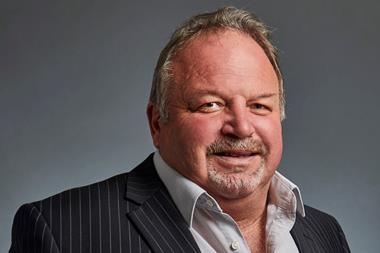Although appetite for commercial space tourism is gaining more traction, a lack of historical data and uniform regulation leaves insurers interested in this line of business stalling
For many, the idea of travelling to space remains a distant dream and something that lies firmly in the world of science fiction.

But if your name happens to be Elon Musk, Richard Branson or even William Shatner – who finally made it into space at the age of 90 in 2021, long after his days as Star Trek’s Captain Kirk on the Starship Enterprise – the idea of space tourism is already becoming a reality.
With spacecraft manufacturers Virgin Galactic, Blue Origin and SpaceX leading the way, space tourism is projected to grow from a $827.2m (£622m) industry in 2023 to almost $13bn (£9.77bn) by 2032, according to figures from Global Market Insights published in Gallagher Specialty’s latest Plane Talking update for the aviation industry for Q3 2024.
Despite the high prospects for growth in this niche area, many challenges remain – including for the insurance industry.
The main challenge is that space tourism is very different to the more established space risks that insurers are used to dealing with.
Whereas traditional space insurance focuses almost exclusively on satellites – valuable but fundamentally non-human assets – insuring space tourists brings the human element much more to the fore.
“When you see the National Aeronautics and Space Administration (NASA) sending people to the International Space Station (ISS), or people launching on SpaceX, it’s normally government or company funded,” explained Ben Spain, a senior partner at broker Gallagher.
“So, they’re either government employees or private company employees, not paying commercial customers. And that’s the biggest difference from a risk management point of view.
“[With space tourism], it’s an individual with families and commitments and a very different way of viewing a claim situation – from a piece of hardware that’s worth X amount to an individual with kids and a legacy behind them. So, it is a bit of a step change for us because we really haven’t seen that type of cover in the market.”
Missing data
In typical aviation insurance, there is historical data that supports actuarial predictions.
Read: Solar storms could cause BI and data loss claims
Read: Aviation reinsurance market could remain hard after ‘very large’ losses – Gallagher Specialty
Explore more risk management-related content here, or discover more news here
Space tourism, by contrast, remains in its infancy – for example, Virgin Galactic’s first commercial space tourism flight was only last year in June 2023.
“What we haven’t really moved toward is proper space tourism, with people going regularly on reliable, well proven systems,” Spain said. “It’s still very much experimental.”
Spain explained that with the typical actuarial driven insurance process, industry professionals would use a dataset with hundreds of thousands of records to base policies on. But when it comes to space tourism, insurers might only have three launches of one type of spacecraft on which to base their risk analysis.
This, therefore, requires a different type of thought process from underwriters.
“When insurers look at a new rocket or system, they have a three- or four-hour presentation from the people who make it and they go through everything in intimate detail,” Spain said.
“They’re underwriting it from a very technical viewpoint, whereas in the aviation market, something like the Airbus A380 has flown hundreds of thousands – if not millions – of times, making it a well known, tried and tested risk.”
The immature space tourism market means that there “are a limited number of underwriters” interested in this line of business too, with very few that Spain would consider “traditional lead markets”.
He continued: “When we look to place a risk, we go to every single insurer for every client. It’s not a market where you’ve got, say, $10bn (£7.52bn) worth of potential capacity and need to place a $100m (£75.2m) risk.
“Instead, for a $300m (£226m) risk, you have to approach pretty much every insurer to ensure you don’t leave any options on the table and maximise capacity for clients.
“In the final syndication, there might be 20 to 25 markets involved.”
Regulatory gaps
Regulation is another significant challenge for the space tourism sector.
The lack of depth when it comes to previous commercial space missions means that existing regulatory frameworks remain underdeveloped or untested. This can make it difficult for space tourism companies to get licences for their operations, which in turn can lead to flight delays and increased costs.
This lack of adequate regulation creates difficulties for insurers too, with liability requirements and definitions around limits often varying significantly across different jurisdictions.
In the aforementioned Plane Talking report, Gallagher Specialty explained that many countries – including the US and the UK – calculated liability limits on a “risk by risk basis”, which it said can make planning difficult.
Read: Aon makes senior aerospace hire as insurance veteran retires
Read: Gallagher leader warns cyber is still an emerging risk
Explore more risk management-related content here, or discover more news here
Spain is certainly keen for regulation to become more coherent. He noted that Gallagher is working hard to both understand and educate what is need from any future regulations.
“The US is further ahead in terms of regulation, but it’s still very, very piecemeal,” he said. “It’s not really set out in a clear, coherent structure across the jurisdictions like the aviation laws are.
“That’s going to be another key driver for what the requirements will be when space tourism becomes much more commonplace. What are you going to need to secure your licence from the US’ Federal Aviation Administration or the UK’s Civil Aviation Authority?”
Spain is also worried that too much regulation could “curtail” the growth of the industry.
He added that the insurance industry must continue to evolve so that it can continue to “provide products that allow our clients and customers to adhere to that regulation without undue stress and concern”.
Innovative future travel
Ultimately, the insurance industry will play a crucial role in shaping the future of space tourism.
By engaging in dialogue about the sector’s direction and developing innovative coverage options, insurers can provide the safety nets needed for continued experimentation and advancements.
While challenges abound, the dawn of commercial space travel is on the horizon, ushering in a new age of exploration and adventure.
- Insurance Times has converted dollar amounts into pound sterling at the rate of £1 = $1.33, as at October 2024.

Hosted by comedian and actor Tom Allen, 34 Gold, 23 Silver and 22 Bronze awards were handed out across an amazing 34 categories recognising brilliance and innovation right across the breadth of UK general insurance.























































No comments yet